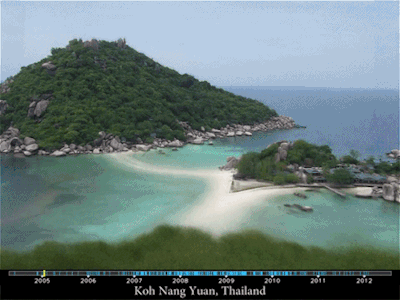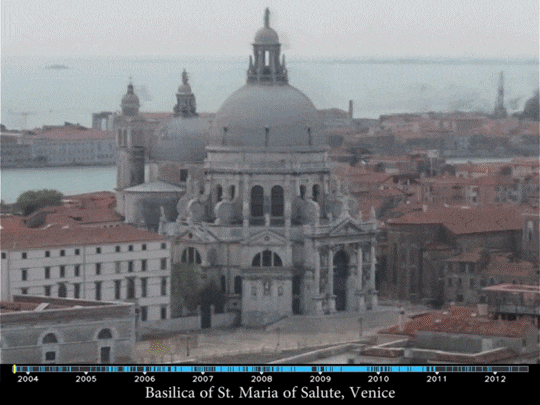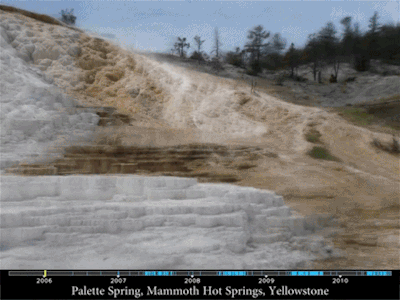Time-lapse videos are traditionally created over a long period of time – the makers place a camera at a spot and record a critical mass of footage for hours or days. The footage is then compressed into a bite-sized, super-speed version, revealing, say, a city waking up and bustling all in a few moments, or the stars racing across the night sky. It requires patience. And a lot of time.


“These ultra-slow changes are documented by the billions of photos that people take over time,” Ricardo Martin-Brualla, David Gallup and Steven Seitz wrote in the paper. “Whereas before it took months or years to create one such time-lapse, we can now almost instantly create thousands of time-lapses covering the most popular places on earth.”
The key obstacle the researches faced was creating a single focal point for the time-lapses. But the sheer number of images online provided the solution. Most photos of the sites were shot from similar angles – imagine how many tourists click the Taj from the front, for instance.
Thereafter, they began putting the images in chronological order. For each of their time-lapse videos, they chose a single reference image that would form the anchor. The other images, after being edited, cropped and realigned, were stitched together to form the video.

Some sequences including over 1,000 images took about six hours to render on a single computer. “The end results are crowd-sourced time-lapses of the changing world, documented almost accidentally by millions of volunteers,” wrote the researchers.

Methodology
The process wasn't easy but the researchers say it will get easier from now on. As they explained:
First, we cluster 86 million photos into landmarks and popular viewpoints. Then, we sort the photos by date and warp each photo onto a common viewpoint. Finally, we stabilize the appearance of the sequence to compensate for lighting effects and minimize flicker.
Our resulting time-lapses show diverse changes in the world’s most popular sites, like glaciers shrinking, skyscrapers being constructed, and waterfalls changing course.
We introduced an approach to mine time-lapses from Internet photos. Our system discovered 10,728 time-lapses that show how the world’s most popular landmarks are changing over time. Our method stabilizes the time-lapse video sequence so that the underlying changes in the scene become visible. The depicted changes include buildings under construction, glaciers retreating, plants growing, seasonal changes, and many geological processes. The scale and ubiquity of our mined time-lapses creates a new paradigm for visualizing global changes. As more photos become available online, mined time-lapses will visualize even longer time periods, showing more drastic changes”.
Here is the full video the researchers uploaded:












